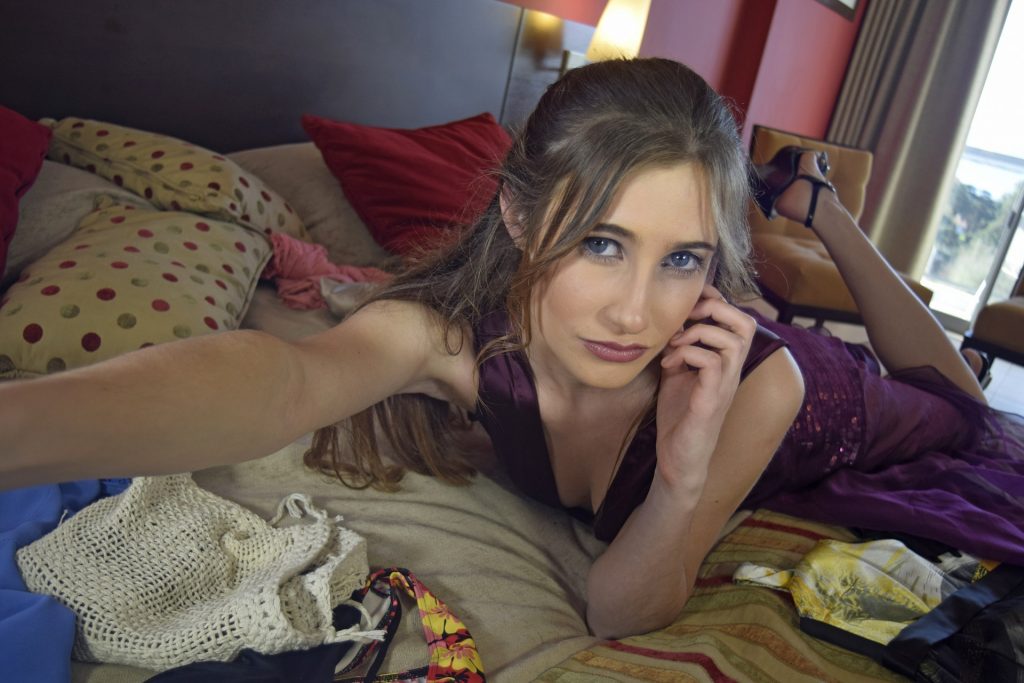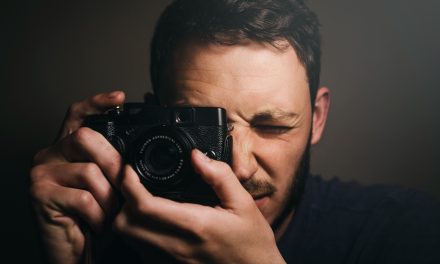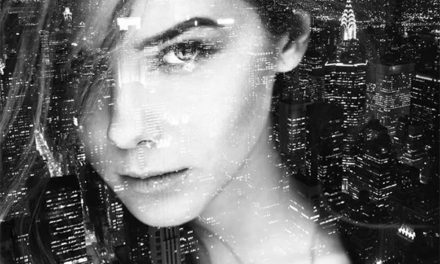Whether you’re taking a selfie with your phone, or setting up your DSLR on a tripod for a more professional self-portrait, it’s easy to be very critical of the finished result. Many of us take endless selfies only to delete them all afterwards, dissatisfied with how we look. So, how can you look better in your self-portraits? These tips will help you out.
Give yourself the makeover treatment
When you work with a model, they don’t just come in and sit in front of the lens. They get their hair styled, their make-up done, and they put on clothing and jewellery to enhance their look. Therefore, it’s no wonder that you don’t like your self-portraits if you just sit in front of the camera as your ‘normal’ everyday self. Do yourself a favour and give yourself the full photoshoot makeover treatment, like you would if you were a client. When you’re dressed to the nines and all made up, your selfie will show the improvement. Don’t think this just applies to female photographers, either: men, you can always get yourself to the barber for a cut and style before you snap.
Practice in the mirror
What’s your best side? A model will be able to tell you in a heartbeat. They will also know the angles that suit their face, how to hold their mouth and jaw, and what to do with their eyes in order to look the most attractive. Because you’re usually behind the camera, you probably have no idea about any of this for yourself. How often do you even look at yourself properly? You can start by simply posing in the mirror, turning your head this way and that way, and seeing what works best in your eyes.
Take more selfies
Next, you should start to take photographs of yourself as you try out your poses. Practice definitely makes perfect, and there’s an important difference between how you look in the mirror and how you look on camera. The only way to really assess whether your look is working is to take a few shots. Don’t be afraid to go crazy – take hundreds of shots, just go wild. You can delete them all later, so don’t feel embarrassed or try to hold back. After you look through them, you can delete anything unflattering and narrow it down so you can see the poses and facial expressions which work best for you.
Look for the light
This may even be a piece of advice that you have given to your models over the years, though you probably forget to take it yourself when it comes down to it. When light hits your face, it can do a lot of funny things – like casting dark shadows where you don’t want them, and making certain parts of your face look elongated. If you don’t want a big nose and deep shadows under your eyes, turn your head towards the light. Looking upwards to a light source off to one side can also have a very flattering effect: it lengthens the neck, casts all shadows aside, and creates a sense of hopefulness in the image.
Choose your background
What’s the difference between a selfie, and a real self-portrait? A self-portrait should be taken with thought and consideration. This means looking around behind you and choosing a location that works well. If you take that shot in your bedroom with all kinds of debris in the background, it’s not going to look professional. It might tell a story about who you are, but it wouldn’t be suitable as a headshot. Going up against a white wall is always a mainstay for making portraits look more smooth, and you can also choose to go into the studio for a real professional environment.
Get some post-production
If you don’t like your eyes, you can always reshape them and change their colour in Photoshop. However, that’s not great for a portrait that needs to show who you really are. Try to use post-production as a tool that shows you at your best, rather than changing who you are. You should, of course, adjust the contrast and move your curve around in order to get a more realistic and flattering lighting. You can also consider removing anything from your photograph which is only temporary: like spots or blemishes on your skin, or dark bags under your eyes. That’s up to you – you may feel that your self-portrait is more accurate if you leave your flaws be and just settle for colour-correction.
Go for drama
If your self-portrait doesn’t need to be used in a professional setting, for example on your resume, then you can go all out to create a more interesting photograph and add some drama. Whether you do this in person or in post-production is up to you. You could turn yourself into a zombie or vampire, stage an interesting background scene, re-enact something from your favourite movie, or so on. The most interesting portraits tend to fall into two categories: those that are totally honest and show the subject in a light that we have not seen before, or those that dramatize by adding interesting elements. Think of Tim Walker’s portrait of Alexander McQueen with a skull – a small added piece of drama – versus Avedon’s portrait of the Dalai Lama, which shows him just simply as he is.
It’s easy to be heavily critical of your own self-portraits. Once you’ve taken your shots using all of these tips, try not to instantly reject everything you see. If you don’t like them, leave them for a while. You’ll find it’s funny how six months or a year can make a portrait seem not quite as bad as you thought. Give it a decade, and you’ll even think they were flattering! Our own perceptions can’t always be trusted because we have an inner idea of how we should look, which gets in the way.




